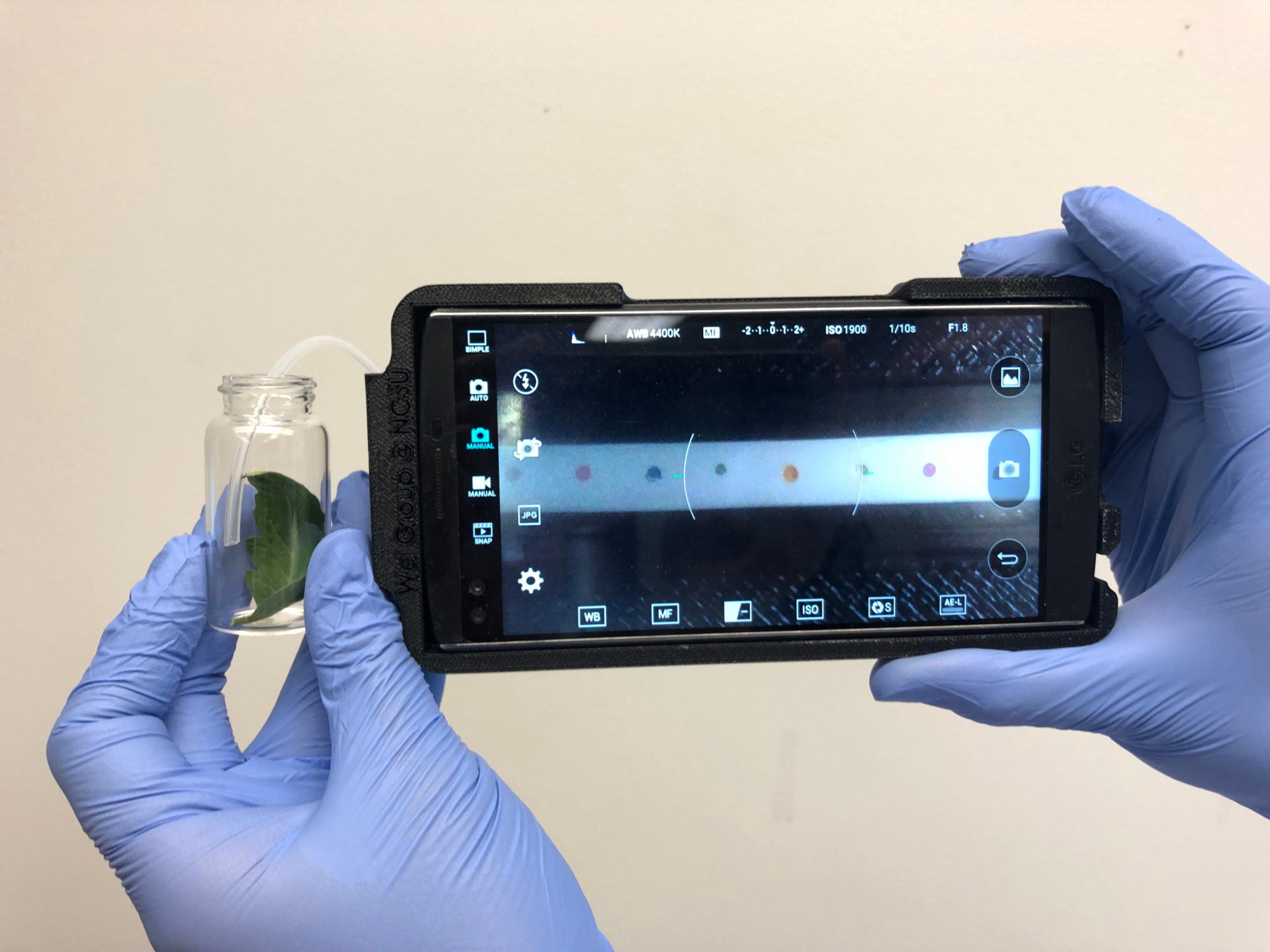
Researchers have created a portable device that farmers can attach to a smartphone to identify plant diseases while in the field.
The device, created by scientists at North Carolina State University, detects and measures airborne volatile organic compounds, which are released by all plants through their leaves. When a plant has a disease, such as blight or leaf spot, the type and concentration of these VOCs change.
The device measures changes in these VOCs to provide a fast diagnosis of the plant’s health, potentially allowing farmers to catch a disease early and prevent it from spreading through the entire crop.
“Each disease has its own signature profile of VOCs. So, by measuring the type and concentration of VOCs being released by the plant, you can determine whether a plant is diseased and – if it is diseased – which disease it has,” says Qingshan Wei, an assistant professor of chemical and biomolecular engineering and corresponding author of a paper on the work.
To do so, a farmer places a leaf inside a small test tube. This is sealed for at least 15 minutes to allow the VOCs to build up in the enclosed space.
The farmer then removes the tube’s cap and inserts a narrow plastic tube. This pumps the air – now full of VOCs – into a reader connected to a smartphone. The reader contains a paper strip that changes colour when it comes into contact with a specific chemical group, thanks to chemical reagents embedded into the strip. The colour indicates the type of disease that might be affecting the plant.
How well do you really know your competitors?
Access the most comprehensive Company Profiles on the market, powered by GlobalData. Save hours of research. Gain competitive edge.

Thank you!
Your download email will arrive shortly
Not ready to buy yet? Download a free sample
We are confident about the unique quality of our Company Profiles. However, we want you to make the most beneficial decision for your business, so we offer a free sample that you can download by submitting the below form
By GlobalData“For this technology to work, we had to develop reagents that could be embedded in the paper strips,” says Zheng Li, a postdoctoral researcher at NC State and first author of the paper.
“About half of the reagents were off-the-shelf organic dyes, but the other half were gold nanoparticles that we functionalised to respond to specific chemical groups. These functionalised nanoparticles allow us to be more precise in detecting various types of VOCs.”

Plant disease detector
Current approaches for monitoring plant health are usually done in the lab and take hours to complete, not including the time taken to transport samples to and from the lab. The new plant disease detector can do so in a fraction of the time and on the field, according to the researchers.
Researchers said it could detect and classify 10 plant VOCs down to the parts-per-million level during proof-of-concept testing.
The device was able to detect the pathogen Phytophthora infestans in tomato leaves with greater than 95% accuracy. It could also distinguish tomato late blight from two other tomato fungal diseases that have similar symptoms.
The findings were published in the journal Nature Plants.
The researchers said they want to automate the pattern analysis using smartphone software to make the process easier for farmers.
They also want to explore the use of customised strips that are tailored by region to detect diseases more common in that geographical location.
The device takes a different approach to UK-based Oxford Nanopore, which uses a handheld device to sequence the DNA of plants and spot disease with near-immediate results.
Read more: Boris Johnson wants to turn the UK in a GM crops haven. Can it work?







